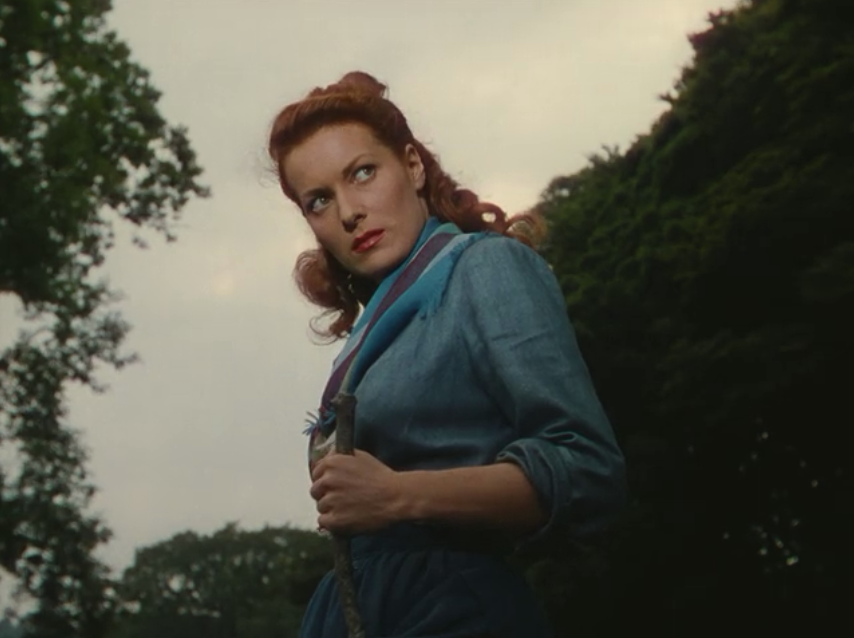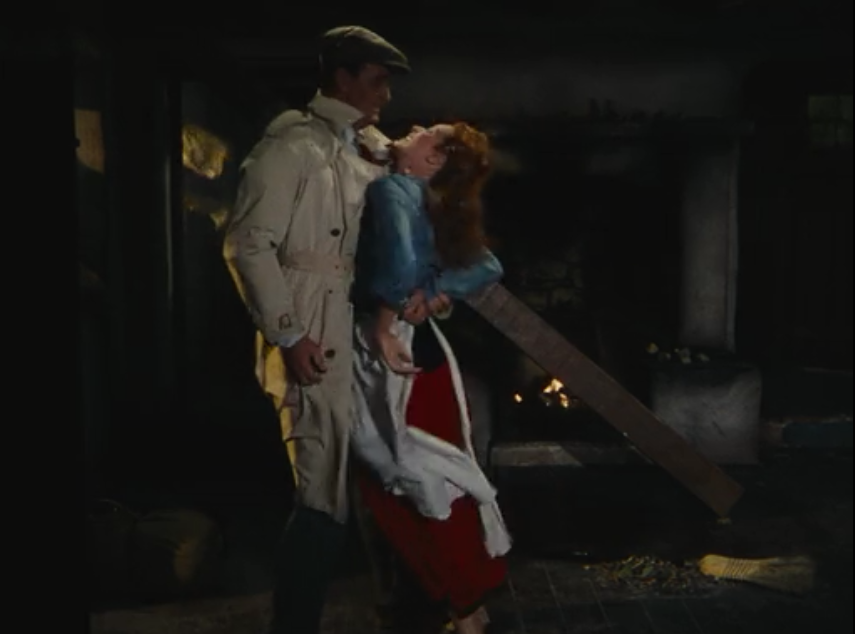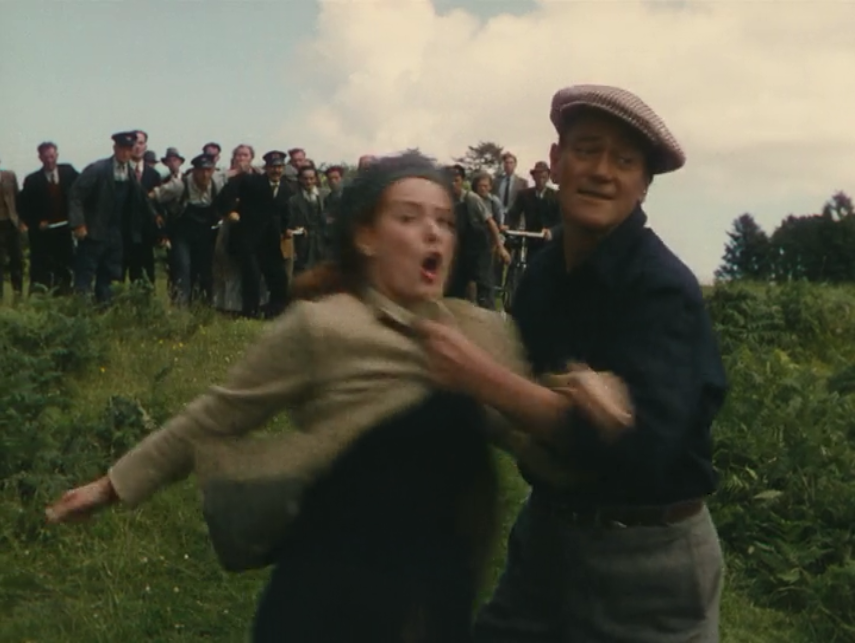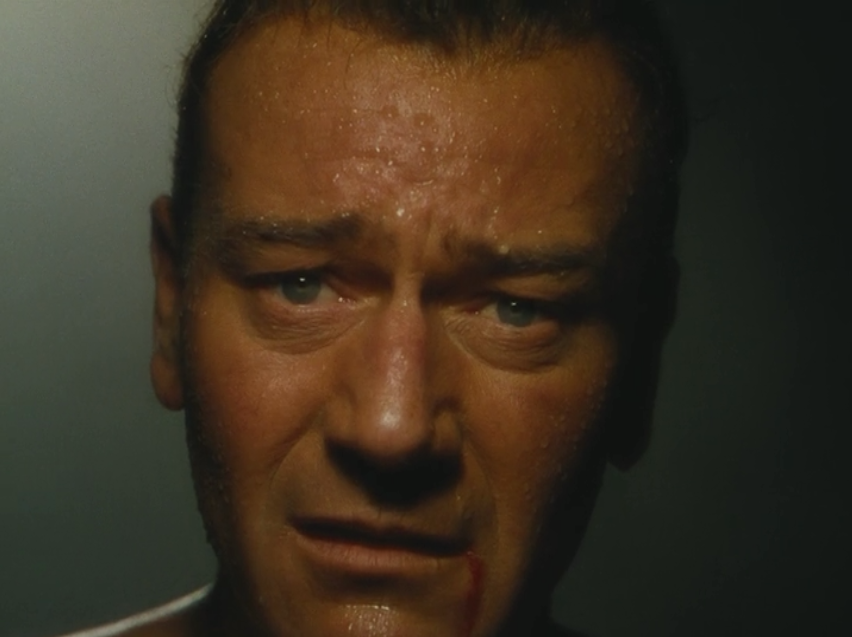 Maureen O’Hara couldn’t possibly look lovelier than she does in John Ford’s The Quiet Man (1952). Cinematographer Winton Hoch, who picked up an Oscar for his efforts, emphasizes her fiery red hair and hourglass figure every time she appears. Virtually any shot containing her would make a great poster because they’re all so unique and beautiful. The trouble is that they are embedded in a film that does O’Hara’s character, Mary Kate Danaher, a lot of violence that I cannot in good conscience condone.
Maureen O’Hara couldn’t possibly look lovelier than she does in John Ford’s The Quiet Man (1952). Cinematographer Winton Hoch, who picked up an Oscar for his efforts, emphasizes her fiery red hair and hourglass figure every time she appears. Virtually any shot containing her would make a great poster because they’re all so unique and beautiful. The trouble is that they are embedded in a film that does O’Hara’s character, Mary Kate Danaher, a lot of violence that I cannot in good conscience condone.
Here is how I might summarize the movie: A physically intimidating American man (John Wayne) buys a house in a small Irish town because he was born there and has enough money (the privilege of being American) to do whatever he wants. He falls in love with an opinionated spinster (O’Hara) who calculates her own value by the contents of her dowry. Romance and marriage follow, but eventually she leaves him because she is embarrassed of marrying a man that will not fight her brother (Victor McLagen) for the money she thinks she is worth. The man proves his valor by pulling her off a train and dragging her by the collar for several miles back into town, receiving encouragement from the meddling townsfolk who are glad to see the mysterious stranger reconnected with his masculinity. He wins her heart by throwing her at her brother’s feet and demanding he take her back.
There is no question that the O’Hara scenes are masterfully lit and composed. But the beauty and sensuality they convey serve to glorify the Wayne character for his violent outbursts, including the kiss he steals in the cottage–
–and that terrible march from the train back into town.
The worst thing about all this abuse is that we are supposed to enjoy it. We are supposed to believe that even Mary Kate is enjoying it despite ample evidence to the contrary. Take a close look at the shot above. Can’t you see how proud she is that her husband is dragging her shoeless across a rocky field in front of all the people she has ever met in her life? Can’t you tell what a great time she is having?
In the end, the shot that I liked the best is the close-up of Wayne’s sweaty face when he realizes that he has killed his opponent in a boxing match.
The shot comes from an excellently executed flashback sequence that explains without any words what the “quiet man” is trying to escape by returning to the hometown he has not seen since he was a child. The shot is pretty standard for boxing movies like Rocky (1975), but it is unlike anything else in this particular film. It is the closest shot of any character’s face, and it is not complicated with multiple characters, lush emerald landscapes, or livestock. It also underlines what is undoubtedly the film’s best quality–the hurting, haunting performance by John Wayne that somehow made it impossible for me to hate his character no matter how much the film reveled in watching him beat up on the beautiful redheaded spinster. The things those eyes have seen!



the scene where mary kate is dragged home is my biggest hurdle in fully embracing this film as well, but wayne and o’hara are great together. and your shot really stands out from the rest of the film!